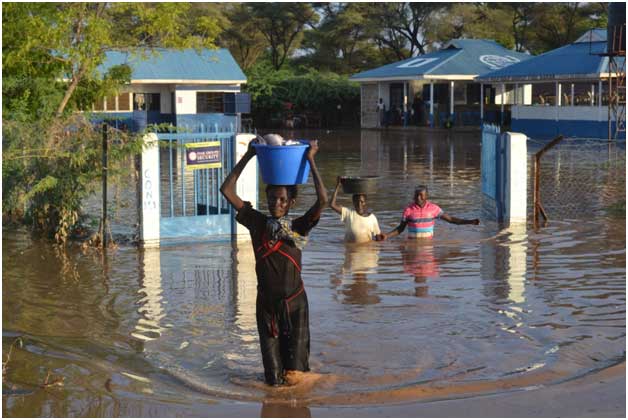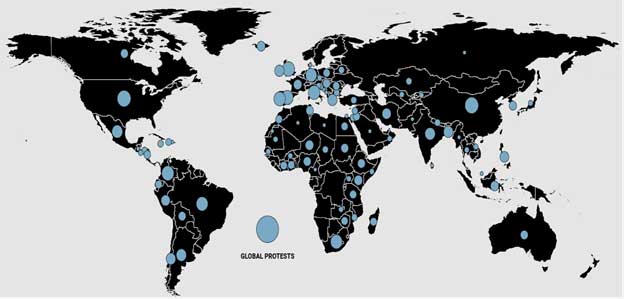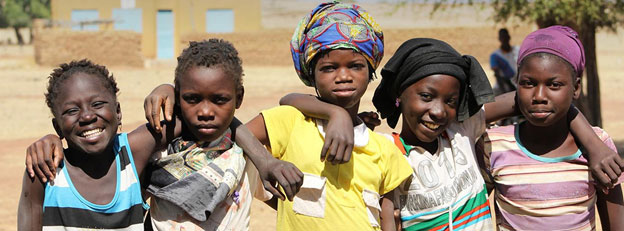the Silent Climate Need — Global Issues
To meet this challenge, large amounts of private capital are once again needed — and this will require climate finance innovation targeted at adaptation, specifically.
The journey from this month’s Paris climate finance summit to COP 28 hosted later this year by the United Arab Emirates – and where financing is likely to be a prominent subject — provides opportunities to raise the profile of this often overlooked need to fund adaptation. While there is relatively little discussion of this topic, it is nonetheless a key to achieving the dual climate goals of reducing emissions while also preparing for the impacts of climate change that are now unavoidable and projected to increase.
Annual funding needs for mitigation have been estimated at around $600 billion by 2030 in emerging economies for energy alone, with private capital providing three-quarters of the required amounts. The reported needs for adaptation are relatively smaller, albeit still only partially identified. For example, annual adaptation needs for developing countries have been estimated at $160-$340 billion by 2030, including more than $50 billion for Africa. These adaptation amounts are beyond any reasonable estimate of the funding capacity of their governments, especially when added to the requirements for mitigation.
There have been various innovative financing mechanisms developed to mobilize private capital for climate but they tend to be focused on mitigation. The best known is probably the carbon markets in which investors are compensated for funding projects that reduce or otherwise avoid emissions. Article 6 of the 2015 Paris climate agreement establishes a resource mobilization mechanism, but once again, expressly for mitigation action. Similarly, the Energy Transition Accelerator presented by U.S. Special Presidential Envoy for Climate John Kerry at COP 27, targets private capital to fund clean power sources.
When it comes to adaptation, the discussion is often focused on public sector funds. For example, the Green Climate Fund, a multi-government facility, looks to provide funding for adaptation at levels that match mitigation. Generally, adaptation projects have been seen as providing public goods and, accordingly, have looked to funding approaches reliant on public sector resources, frequently in the form of grants. This greatly limits financing options and amounts.
Yet, the investment requirements for adaptation are huge, and they are growing every day as rising emissions are increasing adaptation needs. This will require more than just public sources; private capital is needed. But in order to unlock this capital, more attention and creativity must be directed to developing new mechanisms for adaptation.
In considering private funding for adaptation, there are three distinct but interrelated major groups of actors.
- The first are companies exposed to climate-related risks in their operations. This includes a variety of agri-businesses, electricity network enterprises, port operators, tourism industry actors and construction companies. The issue here is largely encouraging these companies to spend more on adapting their businesses to climate change.
- A second potential source is the producers and consumers of fossil fuel products whose previous activities have fueled climate change we must adapt to. For example, just as companies have customer programs to raise finance to offset their emissions (e.g., airlines), consumers might also be motivated to support investments to address the impacts of their emissions.
- The third and critical source is third-party private capital, including commercial banks and private equity investors. This constitutes a massive potential source of funding (the bond market totals in the trillions), and it is the focus of the discussion that follows.
The existing mitigation carbon markets provide a potentially fertile precedent for raising third-party private capital. It is important to recognize that the genesis of carbon markets was governments creating regulatory frameworks that gave value to emissions reductions — governments set targets and created mechanisms that offered both financial incentives and flexibility to meet those targets through capital spending.
This also helped lay the groundwork for the parallel non-governmental voluntary markets. Under these types of structures, investors are incentivized to pay for carbon avoidance which makes projects financially attractive — thereby providing project sponsors with access to capital for investments in activities, sectors and regions that were otherwise unbankable.
A similar approach could be taken for adaptation; namely, the creation of a regulatory or voluntary framework in which payments to projects that provide genuine adaptation benefits are recognized and valued.
Eligible adaptation actions might include climate-resilient agriculture goods and services, investments in cold storage, improved treatment and reuse of wastewater, coastal protection, conservation of biodiversity to protect nature’s ability to adapt and actions to mitigate forest fires, a topic that has received increased attention recently. Importantly, this isn’t just a musing.
The African Development Bank, where one of us is the manager of climate and environment finance, has been developing such a facility: the Adaptation Benefits Mechanism. The ABM mechanism creates a financial product for third-party investors (private capital, donors, consumers) to fund project developers in return for Certified Adaptation Benefits, which attribute a value to lowering or avoiding the negative impacts of climate change on agriculture, people’s health, biodiversity, buildings, businesses and other assets.
The ABM product is designed to be priced at a level that enables the developer to fund what would otherwise be an unbankable adaptation investment. Significantly, it provides these developers with access to new capital sources that can make more adaptation projects a reality.
Other mechanisms are being explored and deployed, such as adaptation impact bonds. Many of these programs are designed to attract third-party private capital to adaptation activities, while additional ones address other barriers and constraints to private investment.
Notwithstanding these efforts, there remains a general shortage of instruments and proposals to attract more private capital to adaptation. Overcoming this lack will require putting more intellectual and creative resources into adaptation finance, including by the world’s leading financial centers. The private sector has more to contribute to this area, but unleashing its power will require financial innovation.
With this month’s Paris climate finance summit now completed, the current lead-up to COP 28 to be held later this year is an opportunity not to be missed to advance the effort to raise more private capital for adaptation.
(First published in The Hill on June 14, 2023).
Philippe Benoit is research director for Global Infrastructure Analytics and Sustainability 2050 and has over 20 years of experience in international finance and sustainability, including management positions at the World Bank. He is also adjunct senior research scholar at Columbia University’s Center on Global Energy Policy.
Gareth Phillips is the manager of climate and environment finance at the African Development Bank Group.
© Inter Press Service (2023) — All Rights ReservedOriginal source: Inter Press Service
Check out our Latest News and Follow us at Facebook
Original Source







